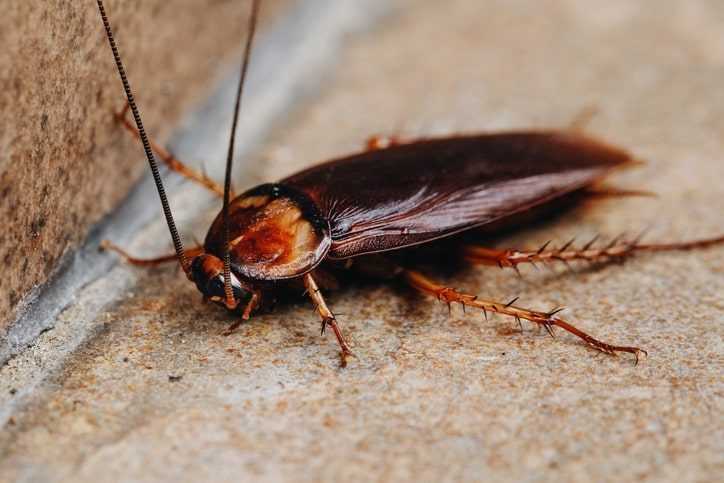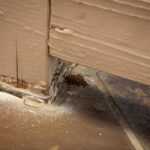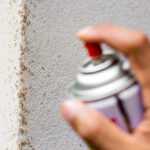Though they’re not a major threat to the structure of your home, cockroaches pose an immediate threat to the health and safety of you and your loved ones.
In addition to their unsettling appearance, cockroaches spread disease by contaminating food. Cockroaches regurgitate saliva as they eat, depositing germs and bacteria onto any food they touch. They can also be a trigger for asthma attacks and allergic reactions.
There are many types of cockroaches all over the world. The most common types found in an infestation are American cockroaches, brown-banded cockroaches, German cockroaches, and Oriental cockroaches. American cockroaches lay eggs near food sources to ensure the newly hatched nymphs have immediate access to nutrition. German cockroaches are known for their prolific reproductive behaviors and the significant number of offspring a single female can produce.
Generally, these species can be identified by their flat, oily body, brownish color, and six long legs. To prevent a cockroach infestation in your home or business, it’s crucial to educate yourself about these critters. Discover how quickly cockroaches reproduce, and how PURCOR Pest Solutions can keep these pests a bay.
Understanding Cockroach Reproduction
Cockroach reproduction is a fascinating yet complex process that begins with the mating of male and female cockroaches. Once mating occurs, the female cockroach’s reproductive system is designed to produce multiple egg cases, known as oothecae. Each ootheca contains several eggs, which will eventually hatch into nymphs and grow into adult cockroaches. This efficient reproductive strategy ensures that female cockroaches can lay numerous eggs over their lifetime, contributing to the rapid growth of cockroach populations.
Life Cycle of a Cockroach
The life cycle of a cockroach is divided into three distinct stages: egg, nymph, and adult. The journey begins when a female cockroach lays eggs in a protective case called an ootheca. Depending on the cockroach species, an ootheca can contain anywhere from 10 to 50 eggs. Once the eggs hatch, they emerge as nymphs—tiny, wingless versions of adult cockroaches. These nymphs undergo several molts, shedding their exoskeletons as they grow. After multiple molts, they finally reach adulthood. Adult cockroaches are responsible for reproducing and continuing the infestation cycle, making them a critical focus for pest control efforts.
Cockroach Eggs
Cockroach eggs are a crucial part of the cockroach life cycle. Typically white or light-colored, these eggs are encased in a protective shell known as an ootheca. The ootheca, which is usually brown or black, serves as a shield, safeguarding the eggs from environmental hazards and predators. Female cockroaches strategically place these egg cases in hidden, secure locations, ensuring the best chance for the eggs to hatch and the nymphs to thrive.
Characteristics of Cockroach Eggs
Cockroach eggs are generally small, ranging from 1/16 to 1/4 inch in length. They are usually white or light-colored and are encased in an ootheca, a protective case that is typically brown or black. This ootheca can be found in various locations, such as cracks and crevices, under sinks, and near food sources. The protective nature of the ootheca ensures that the eggs remain safe until they are ready to hatch.
Where Cockroaches Lay Eggs
Cockroaches are adept at finding secure locations to lay their eggs. Common sites include:
- Cracks and crevices
- Under sinks
- Near food sources
- In bathrooms and kitchens
- In areas with high humidity and moisture
Female cockroaches prefer locations that offer protection from predators and a stable environment for the eggs to hatch and the nymphs to develop. Different cockroach species have unique egg-laying habits. For instance, German cockroaches often carry their eggs with them until they are ready to hatch. In contrast, American cockroaches carry their egg case for a few days before depositing it in a corner or crevice near a food source. Oriental cockroaches typically lay their eggs in protected areas, such as under sinks or near food sources.
Understanding where cockroaches lay eggs is crucial for effective pest control and prevention. By identifying and eliminating potential egg-laying sites, homeowners and pest control professionals can help prevent infestations and reduce the risk of cockroach-borne diseases.
Average Reproduction Cycle of a Cockroach

Did you know that the average span of a cockroach is between 168 days and 786 days? Female American cockroaches store sperm, so they only need to mate once to lay eggs a number of times. The female German cockroach, on the other hand, can lay a significant number of eggs, contributing to rapid population growth.
Once they’ve mated that one time, a female cockroach can produce two oothecae, or egg cases, of cockroach eggs per week. Each ootheca—a dark brown, symmetrical casing about 5/16 inch long—contains 14 to 16 eggs. These eggs can hatch into numerous baby roaches, which quickly mature and continue the infestation cycle. In her lifetime, a female cockroach can produce up to 90 egg capsules.
When at room temperature, an egg hatches into its next stage of life, a nymph, after about 55 days. A cockroach nymph is grayish at first but becomes a rust color after it molts a few times.
Cockroaches stay in the nymph part of their lifecycle for anywhere from 160 to 971 days. In this stage of life they begin to develop wings and start foraging for food and water. An adult American cockroach is reddish-brown and matures in 6 to 12 months.
Why do German Cockroaches Infest Homes?
Cockroaches are typically found in large numbers and usually in places where food is stored. Like most infestations, cockroaches come inside when they are looking for shelter, food, and water.
Thankfully, that means there are a few ways to discourage these bugs from making your home their breeding ground.
How to Prevent Cockroaches
The first defense against cockroaches is maintaining a clean environment. They love to nest in areas that are poorly sanitized. Sealing small gaps in windows, doors, and molding can also prevent cockroaches from sneaking inside. Identifying and removing German cockroach eggs, which are typically brown or black and found in hidden locations, is crucial for effective pest control.
Kick out Cockroaches with PURCOR
While preventative measures can help minimize your chances of a cockroach infestation, it takes a team of certified pest professionals to safeguard your home. When cockroaches do become a problem in your home or business, contact the experts at PURCOR for immediate attention. We offer effective, targeted cockroach control for your peace of mind. Contact PURCOR today to request a free estimate for resolving your cockroach issue.
"*" indicates required fields
"*" indicates required fields




